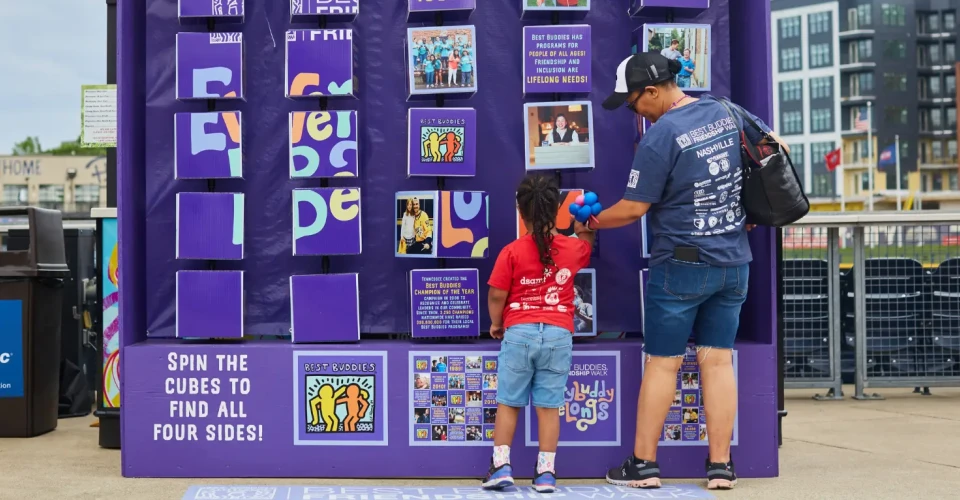In today's diverse and interconnected world, inclusivity isn't just a buzzword—it's a fundamental principle that can drive business success and foster community engagement. One powerful tool for inclusivity is signage. Well-designed, inclusive signage can make an impact on your business and community.
The Importance of Inclusivity in Signage
Inclusivity in signage goes beyond merely accommodating individuals with disabilities; it encompasses creating an environment where everyone feels welcome and valued. Inclusive signage considers various aspects, such as language, cultural sensitivity, accessibility, and overall design. By addressing these elements, businesses can ensure that their message reaches and resonates with a broader audience.
Key Elements of Inclusive Signage
1. Accessibility
Accessibility is a cornerstone of inclusive signage. This includes designing signs that are easily readable and understandable by individuals with visual, auditory, or cognitive impairments. Here are some key aspects to consider:
Text Size and Font: Use large, clear fonts that are easy to read from a distance. Avoid overly decorative fonts that can be hard to decipher.
Contrast: Ensure high contrast between text and background to improve readability for those with visual impairments.
Braille and Tactile Elements: Incorporate Braille and tactile elements into your signage to assist individuals who are blind or have low vision.
Audible Signals: For critical signage, consider adding audible signals to help those with visual impairments.
2. Multilingual Support
In a multicultural society, it's essential to accommodate speakers of different languages. Providing multilingual signage ensures that non-native speakers can easily navigate your space and understand your messages. Symbols and images can also be used to help non-native speakers understand the message. This can be particularly important in areas with high tourist traffic or diverse communities.
3. Cultural Sensitivity
Cultural sensitivity in signage involves being aware of and respecting the cultural norms and values of your audience. This includes:
Images and Symbols: Use culturally appropriate images and symbols and avoid those that could be considered offensive.
Colors: Be mindful of color choices, as colors can have different meanings in different cultures.
Language: Ensure that translations are accurate and culturally appropriate, avoiding idiomatic expressions that might not translate well. Use gender-neutral language.

4. Celebrate Individual Differences
Create immersive signage that becomes the backdrop, encouraging your audience to be the centerpiece. Uplifting messaging with photo opportunities will create an atmosphere of inclusion and encourage social sharing to spread the message.

5. Signage to Bring People Together
Experiential signage, such as photo frames or boxes with facts on each side, encourages conversation and brings people together to pose for a photo or learn more about the cause. You can also create opportunities for people to add to the signage themselves, with markers, chalk, stick-on pieces, and more.
Benefits of Inclusive Signage
1. Enhanced Customer Experience
Inclusive signage improves the overall customer experience by making your business more accessible and welcoming to everyone. When customers feel valued and understood, they are more likely to return and recommend your business to others.
2. Legal Compliance
In many regions, accessibility laws require businesses to provide accommodations for individuals with disabilities. Inclusive signage helps ensure compliance with these regulations, reducing the risk of legal issues and potential fines.
3. Brand Image and Reputation
Demonstrating a commitment to inclusivity enhances your brand image and reputation. It shows that your business values diversity and is willing to go the extra mile to accommodate all customers. This can differentiate you from competitors and attract a loyal customer base.
4. Community Engagement
Inclusive signage fosters a sense of community by making everyone feel welcome. This can lead to increased community engagement and support, as people are more likely to patronize businesses that reflect their values.
How to Implement Inclusive Signage in Your Business
1. Conduct an Inclusivity Audit
Start by assessing your current signage to identify areas for improvement. This can involve consulting with accessibility experts, gathering feedback from customers, and reviewing compliance with local regulations.
2. Collaborate with Experts
Work with designers and accessibility consultants who specialize in creating inclusive signage. They can provide valuable insights and recommendations to ensure your signage meets the highest standards of accessibility and inclusivity.
3. Involve the Community
Engage with your community to understand their needs and preferences. This can involve conducting surveys, holding focus groups, or collaborating with local organizations that advocate for inclusivity.
4. Regularly Update Your Signage
Inclusivity is an ongoing process, and your signage should reflect this. Review and update your signage regularly to incorporate new insights, address emerging needs, and stay compliant with changing regulations.
5. Promote Your Commitment
Let your customers know about your commitment to inclusivity. Use your website, social media, and other marketing channels to showcase your inclusive signage and the steps you've taken to accommodate all customers.
Inclusive signage is a powerful tool for creating a welcoming and accessible environment for all. By considering accessibility, multilingual support, cultural sensitivity, and gender-neutral language, businesses can enhance the customer experience, ensure legal compliance, improve their brand image, and foster community engagement.
At AlphaGraphics, we are dedicated to helping businesses achieve their inclusivity goals through expert signage solutions. Whether you need help with design, implementation, or updates, our team is here to support you every step of the way. Together, we can bring your vision to life and create a more inclusive world for everyone.


